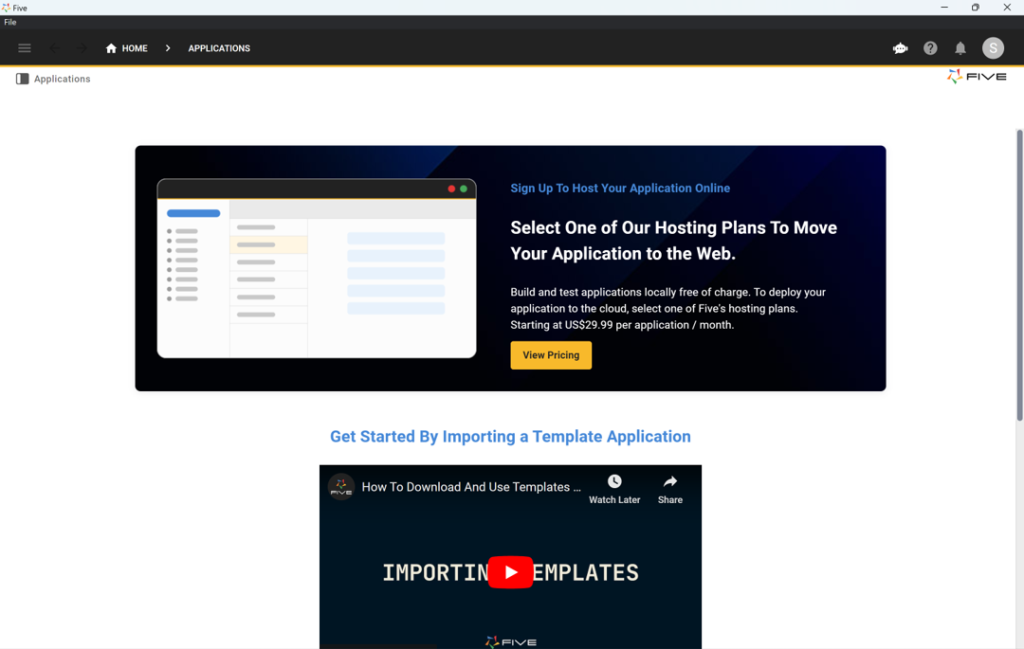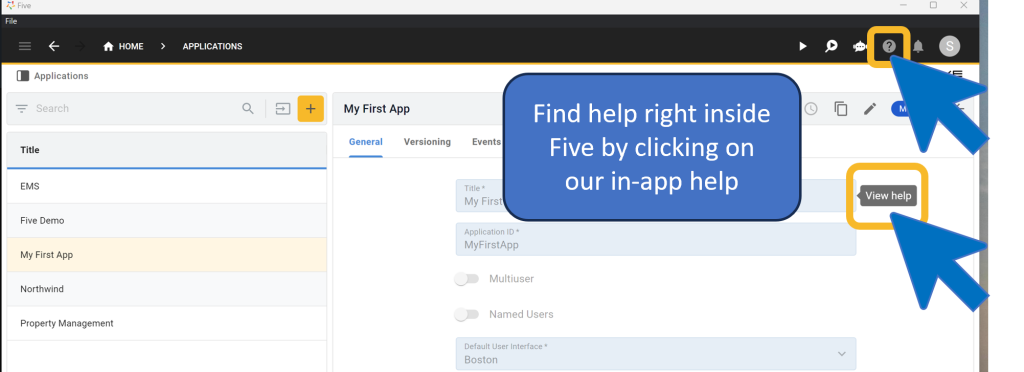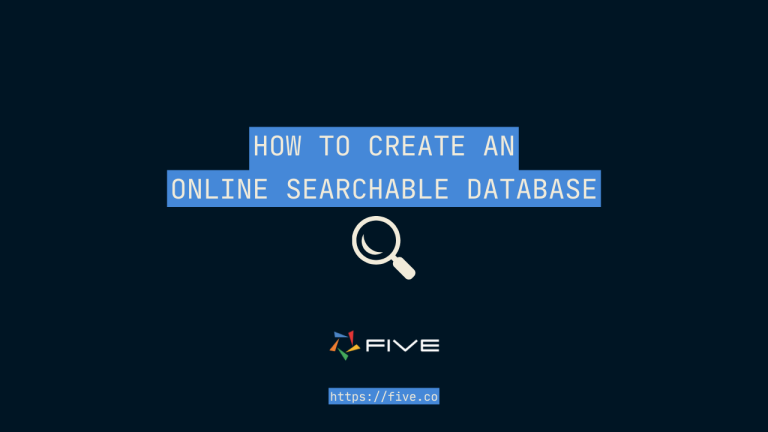The Only Appsmith Alternative You Need to Know
Find The Perfect Appsmith Alternative
Appsmith is an open-source tool that enables the rapid development of internal applications, but there’s many alternatives that you might want to consider.
These web application builders are designed to accelerate custom development, reducing the need for boilerplate code and speeding up development cycles.
But which Appsmith alternative is the best?
Why Do People Use Tools Like Appsmith?
One of Appsmith’s strengths is its focus on building internal tools. Appsmith is an open-source platform, which means that developers can access, modify, and customize the source code to suit their specific needs. This makes it an option for organizations looking to develop custom internal tools without being locked into a proprietary system.
When building and managing internal tools, it’s crucial that application builders are unopinionated. This means they should allow you to quickly create custom tools that fit your existing workflows, rather than forcing you to adapt your workflows to fit the tool. To achieve this, application builders typically follow one of two approaches:
The no-code approach (platforms like Bubble), accelerates development by using pre-defined templates and built-in features. While this offers speed, it limits customization and the ability to extend functionality.
No-code tools are not a replacement for traditional software development but can be useful for specific contexts like prototyping. However, they should be used cautiously as customization can become really difficult.
The second approach of low-code is arguably better. This approach gives you the freedom to make custom adjustments and not be restricted to the constraints of the application builder you’re using.
Appsmith fits into this category and so does the popular Appsmith alternative, Five.
What Are Some Appsmith Negatives?
Scanning reviews on platforms like G2 and through personal experiences with Appsmith, various performance issues have been reported when applications reach a certain level of complexity. One user noted that ‘the flexibility of the platform is both its strength and weakness, as you can often perform tasks inefficiently, leading to a downgrade in user experience.’
Users have also mentioned limitations with the UI elements, citing a lack of reusability and subpar responsiveness on mobile devices. Additionally, the self-hosted version has been reported to have some bugs, and debugging more complex code fragments can be challenging due to the absence of a real debugger.
These issues highlight some of the challenges, but it’s important to recognize that any application builder will have its own set of inconveniences.
While Appsmith is useful for building internal tools quickly, it’s also worth checking out alternatives like Five.
What is the Best Appsmith Alternative?
Five is an online development platform designed to help developers quickly build and deploy custom web applications. Within Five, developers can rapidly create release-ready software using its pre-built features, including a hosted MySQL database, authentication, and access control setup.
Five goes beyond simple drag-and-drop or WYSIWYG interfaces. It enhances development speed with wizards and point-and-click tools; for instance, its table and form wizards make the creation of database tables and forms straightforward and rapid.
Moreover, developers are not limited. They can switch to traditional coding to extend and customize applications. Five supports familiar programming languages like JavaScript, TypeScript, and SQL, avoiding proprietary languages.
In essence, Five allows developers to merge the ease and speed of low-code development with the flexibility and power of full code customization.
With Five you can:
- Set Up Quickly: Create an application in minutes.
- User-Friendly Interface: Create a secure, login-protected interface that works seamlessly on web, desktop, tablet, and mobile devices.
- Data Import: Easily import existing data from Excel, Google Sheets, or CSV files directly into your MySQL database, enabling you to get up and running quickly.
Get free access to Five and start building your web application today.
A Deeper Dive Into Five vs Appsmith
Five and Appsmith are similar in target audience.
They’re both geared towards developers and engineers who are well-versed in APIs, and database queries. They emphasize a more developer centric approach within the low-code market, making it suitable for users who prefer or require extensive coding flexibility.
Unlike Appsmith, Five includes a hosted MySQL database, simplifying data management and reducing the need for additional infrastructure setup.
It’s important to note that even if you aren’t experienced with database terminology you can still use Five.
Pricing Comparison
Appsmith is more expensive than Five. Appsmith is $40/month for 100 hours of usage whereas Five starts from US$27.49 per app/month.
Transparent and Fixed Pricing:
- Five offers a straightforward, fixed subscription fee per application, making budgeting simpler and more predictable compared to Appsmith’s usage-based pricing.
Unlimited End-Users:
- In the Team and Business plans, Five supports unlimited end-users, making it highly scalable without additional costs per user, unlike Appsmith which charges based on usage hours.
Comprehensive Features:
- Five includes essential features like built-in MySQL database, custom theming, SAML/SSO, and AI-assisted coding in its pricing plans, whereas Appsmith requires higher-tier plans or enterprise solutions for similar capabilities.
Enhanced Storage and Performance:
- Five provides substantial storage and computing resources at each plan level, ensuring better performance and capacity for growing applications.
Developer-Friendly Environment:
- Five’s pricing includes features like reusable JavaScript snippets, custom branding, backup and restore, and configurable data views, which are vital for robust application development and maintenance.
Support and SLA Options:
- Five offers email support starting from the Team plan and allows for custom SLAs, providing reliable assistance and uptime guarantees essential for business-critical applications.
How to Get Started With Five
If you’re interested in Five here’s a quick guide to help you get started. It’s just a breakdown of the core concepts to make your first experience successful and enjoyable!
1. Access Five
First, sign up for free access to Five and start building web apps directly in your browser.

2. Start Developing
With Five up and running, you’re ready to dive into your first app development project! Begin by following our YouTube tutorial on developing a membership application. This seven-step guide walks you through building an app with Five, from database modeling to previewing your finished application locally.
The first step of the tutorial explains how to create a database table in Five. If your main goal is developing a web app, this four-and-a-half-minute video is highly recommended.
The video also demonstrates how to assign different SQL data types to your table fields and visually inspect your database schema using Five’s database modeler. Additionally, it covers how Five automatically adds primary keys to all your tables.
3. Where to Find Help
Every new tool has a learning curve, and Five is no different. For those familiar with SQL, Five is intuitive, relying heavily on standard SQL concepts like relationships, primary and foreign keys, data views, and queries.
For newcomers to relational databases or those creating their first database, the learning curve might be steeper. Where can you find help if you get stuck?
In addition to our user community and YouTube channel, Five offers extensive in-product help. To access help and documentation, click the Help icon in the top right corner. While it might not answer every question, the help is comprehensive and covers many commonly asked questions.

Moreover, many of Five’s fields have help text accessible by hovering over the field and clicking “View help.” Check out the image below to see where the Help buttons are located in Five.

